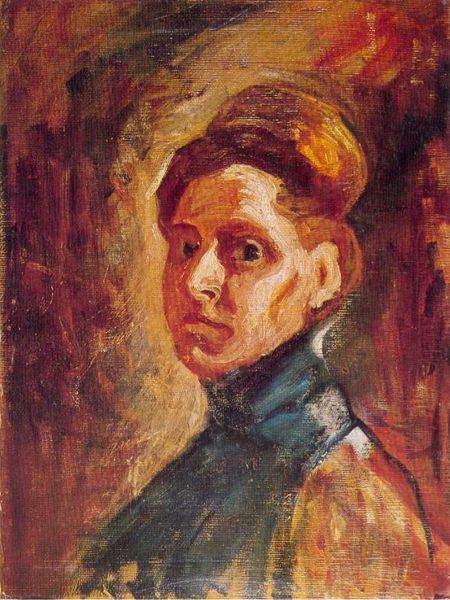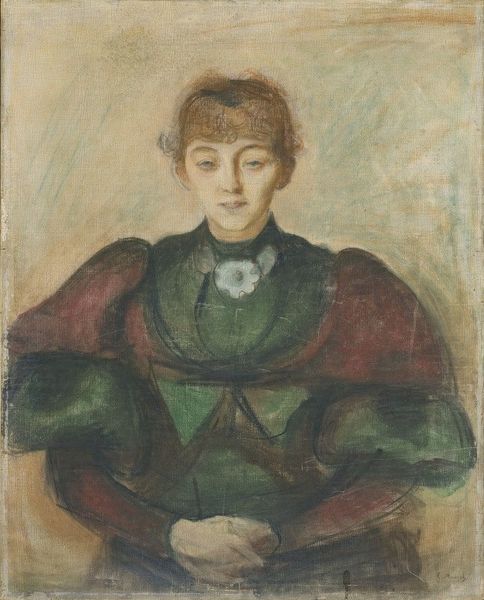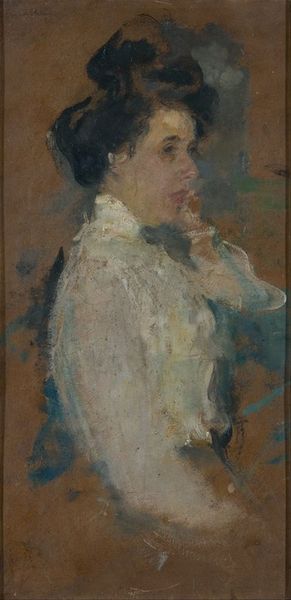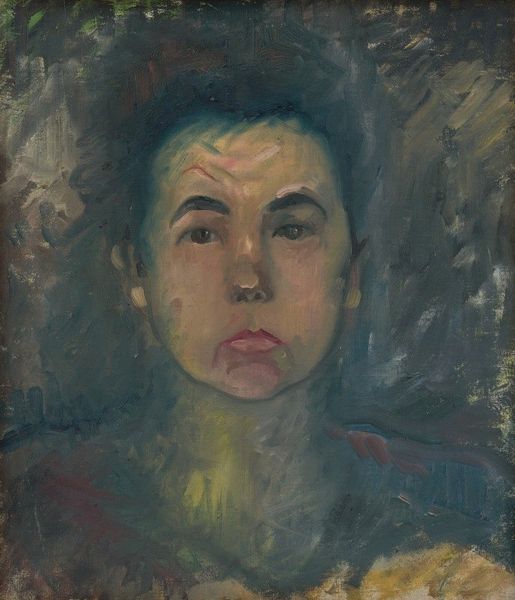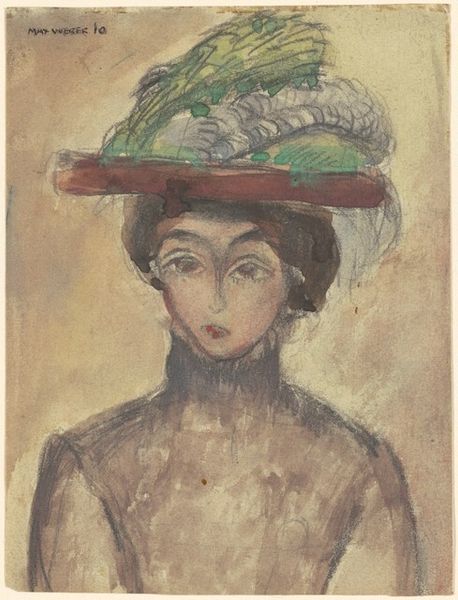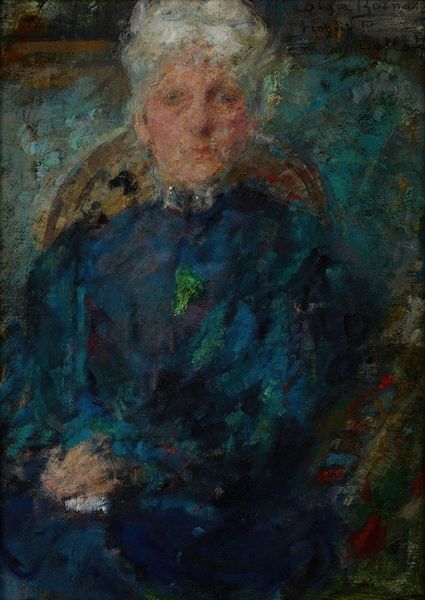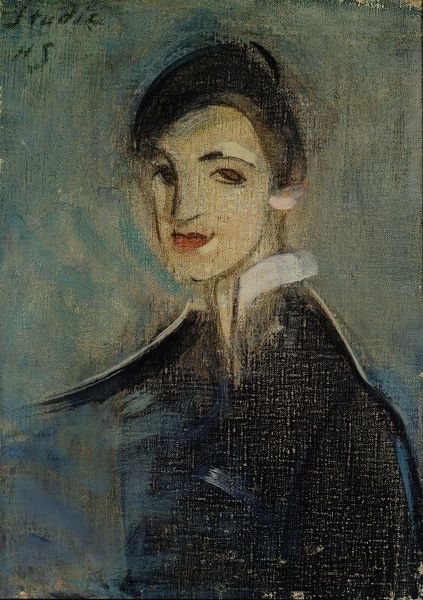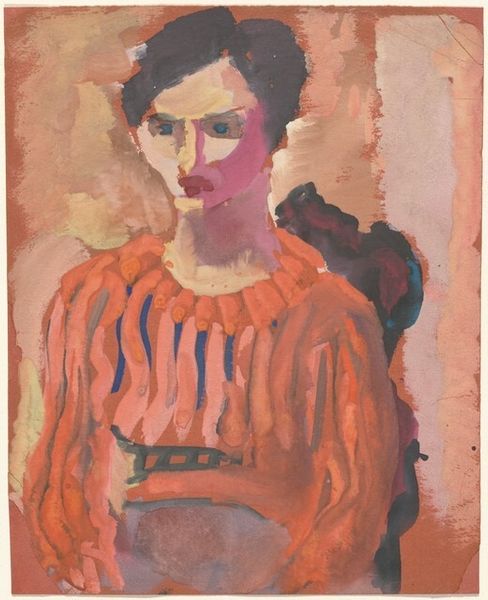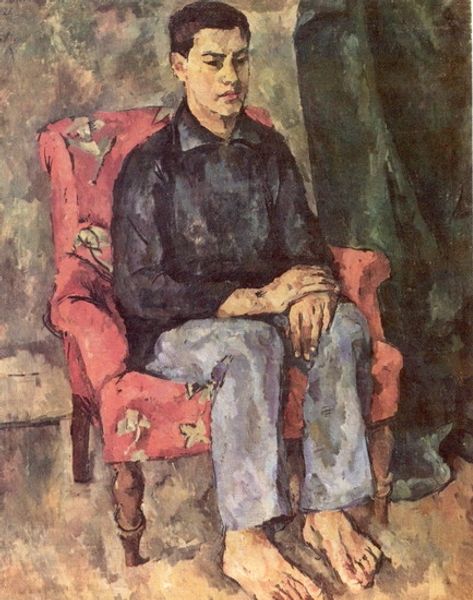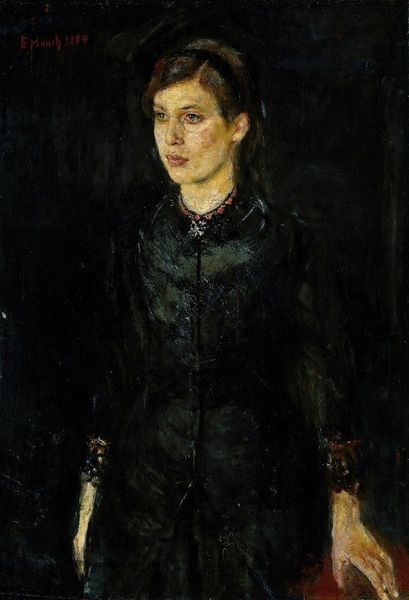
Copyright: Public Domain: Artvee
Curator: The first thing that strikes me is the rather subdued palette—mostly muted greens and greys, almost monochromatic—and the effect it has on the overall mood. Editor: Indeed. What you’re looking at is Olga Boznanska's "Self-Portrait with Flowers," believed to have been painted around 1909. It’s an oil on canvas. She was quite accomplished in capturing subtle emotional states, don’t you think? Curator: Absolutely. The way the light catches her face… she seems pensive, perhaps a touch melancholic. Even the flowers, those spots of red near the bottom, seem less celebratory and more like… accents of sorrow. It seems such an introspective piece, so divorced from external validation. Editor: Considering her life at the time, that interpretation rings true. She was struggling with personal issues and a growing sense of isolation in Paris, despite being a respected artist. The flowers, which appear almost an afterthought, could symbolize the fading beauty of life, the ephemeral nature of her triumphs and failures. Note how impressionistic this work is for her, less formal portraiture and more a study of feelings. Curator: I also find myself pondering the positioning of the artist herself in the larger cultural narratives of that time. Female artists during that era were just beginning to find increased acknowledgement and independence, yet there was persistent struggle for them to be seen on par with their male counterparts. The somberness here almost reflects a silent battle—one for recognition and agency. Editor: Yes, it is clear Boznanska aimed for psychological depth rather than idealized beauty, a choice that can be interpreted as an active subversion of traditional female portraiture and the expectations placed on women to be decorative and pleasing. Curator: And that single blot of green, top right… What do you make of that? It almost looks unfinished, but knowing Boznanska, perhaps it’s a deliberate rupture—a disruption in the visual harmony meant to unsettle us, question the completeness of the image, the self. Editor: A compelling observation, it could be. Or even simply a formal disruption. Regardless, exploring her body of work certainly allows one to probe questions of representation and artistic integrity in a broader social sphere. Curator: Ultimately, Boznanska presents not just a likeness but a profound and layered story. Editor: A story still relevant, reminding us how much the personal intersects with public expectations.
Comments
No comments
Be the first to comment and join the conversation on the ultimate creative platform.

